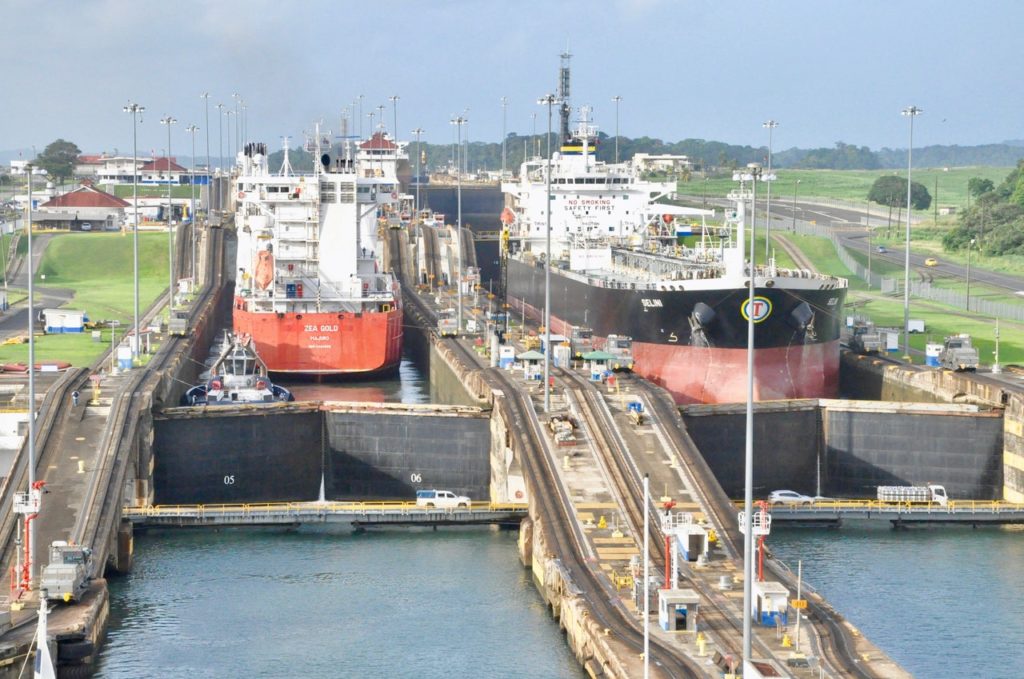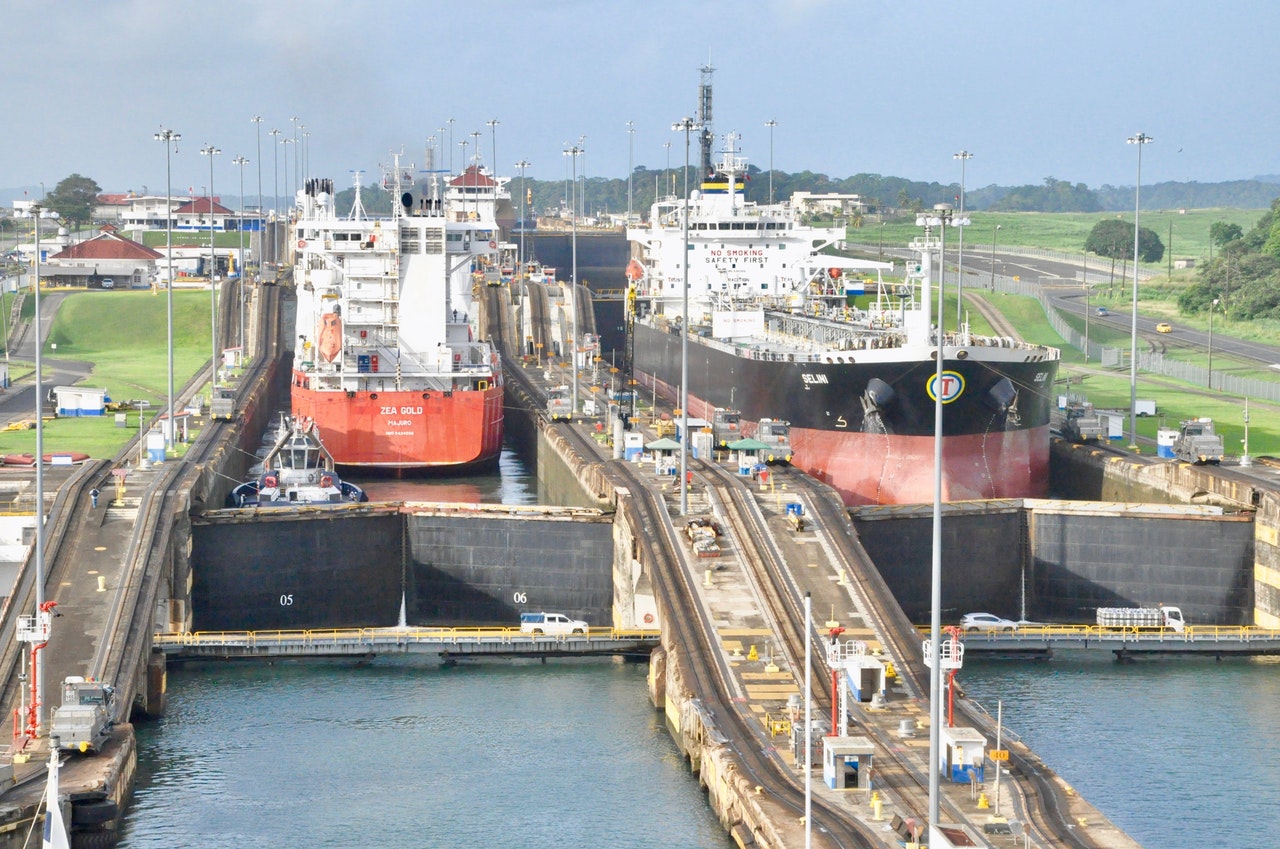
I learned this today. The Panama Canal has reduced the journey from the Atlantic Ocean to the Pacific Ocean by 8,000 nautical miles (14,818 km), about 22 days.
Before the Panama Canal was built in 1914, boats would have to either sail around the southernmost point of South America or up through the Bering Strait. Neither route was popular. The Bering Strait is quite often frozen and suffers from bad weather. The tip of South America, the Cape of Good Hope and the Drake Passage, is one of the most dangerous passages that can be sailed on Earth. The strong sea currents don’t have any landmasses to soften them and the waves can reach 40 feet, 12m. So many ships were lost that the journey was impractical. However, for 400 years, there were no alternatives.
The main ships that were making this voyage were European ships heading to and from their colonies. The Drake Passage was first sailed by Sir Francis Drake in 1525. As more and more colonies were made in the north and south Americas, more and more ships made this route. It was long and it was treacherous. Charles V, King of Spain and Holy Roman Emperor was the first to suggest building a canal in 1534. He realized that his ships needed a safer and faster way to return from their colonies. Nobody at that time had the technology to build such a canal.
Over the next few hundred years, the number of settlements and the amount of shipping slowly increased. Areas such as California began to grow and a better route from the west coast of America was needed. The 1849 gold rush made California and the west coast richer. A way was needed of getting things to the rest of the world without having to risk the Cape of Good Hope route.
In 1855, America built the Panama Railroad. It crossed the narrow land of what is now Panama and it connected Western America to the rest of the world trade routes. Trade flourished and western America flourished even more. People started to think more seriously about building a canal.
France had finished building the Suez Canal in 1869 and they thought that they had the expertise to build a Panama Canal. At this point, Panama is a part of Colombia, so the French government signed a treaty with Colombia and went to work. They worked for 13 years before they gave up. They discovered that building a canal through the jungles of Panama was a lot different from building one through the sand of Suez. They had to cope with the climate, torrential rain that caused the river to flood, steep mountains with landslides, and tropical diseases. Yellow fever and malaria killed about 200 French workers every month. By the time they gave up, 22,000 workers had died, and they had spent a quarter of a billion dollars on it.
In 1903, the US decided they would build the canal, but they would only do it if they could control it. They signed a treaty with the government of Colombia, but then the region of Panama decided to declare independence. Theodore Roosevelt realized he could get better terms with the Panamanians than with Colombia, so he sent US troops into Panama to support their bid for independence. When everything settled down, Panama was an independent country and America had indefinite rights to the land the canal would be built on.
The Us bought the equipment that France had left and went to work. They had to replace most of the equipment because it was old, and they had to do something about the diseases. They implemented sanitation, sprayed pesticide on insect-prone areas, and removed any stagnant water. They made huge improvements, but they still lost 5,600 workers to disease and accidents before they had finished.
The canal was finished in 1914 and went into use straight away. 1,000 ships used the canal in its first year, but that number rose rapidly. The new route was safer, and it cut a huge amount of time off the journey and in a business where time is literally money, this made everything cheaper. It was very positive for western America and global trade, but it was not so good for the port towns along the coast of South America because ships were no longer using that route and stopping in their towns.
These days, about 15,000 ships use the canal every year and they are getting bigger. The canal was widened recently, but the width of the canal limits the size of the boat that can use it. Ships are specifically made with the maximum size that can fit through the canal and they are called Panamax ships.
So, the Panama Canal was built because travelling all the way around the bottom of South America was extremely dangerous and took a very long time. France started to build the canal to begin with, but it was much harder than they had expected. Jungle diseases caused the deaths of 22,000 workers. After the French left, the Americans stepped in, but they aided Panama in a struggle for independence with Colombia because it would get them more favorable terms. They built the canal in 10 years and it opened in 1914. It saves ships almost 15,000 km and 22 days. And this is what I learned today.
Photo by Michael D. Camphin from Pexels
Sources
https://en.wikipedia.org/wiki/Panama_Canal
https://en.wikipedia.org/wiki/History_of_the_Panama_Canal
https://www.nationalgeographic.com/history/article/140815-panama-canal-culebra-cut-lake-gatun-focus

